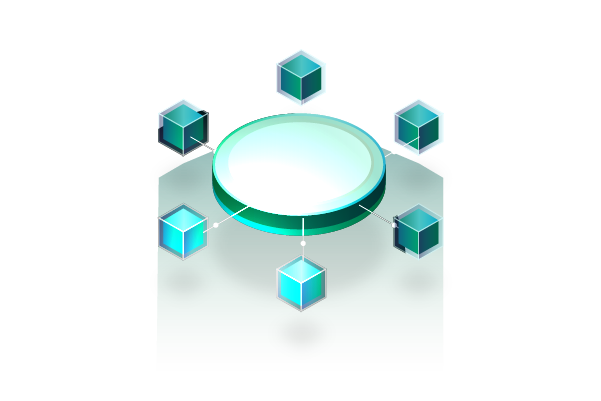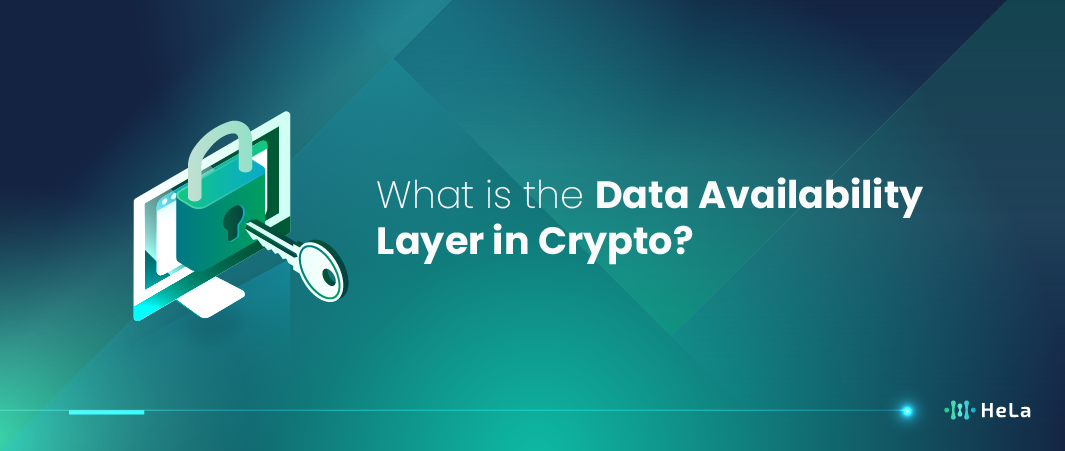The world of cryptocurrency and blockchain technology is filled with complex concepts and terms. One of these is the Data Availability Layer. Understanding this layer is essential for anyone looking to grasp how blockchain networks function. In this article, we will explore what the Data Availability Layer is and why it is important in the realm of crypto.
Blockchain technology relies on various components to ensure data integrity and security. Among these, the Data Availability Layer plays a crucial role. It ensures that data is available for verification and helps maintain the integrity of the blockchain. This layer supports the network by making sure that all necessary data is accessible when needed.
For those new to crypto or blockchain, the concept of the Data Availability Layer might seem daunting. However, with a simple explanation, it becomes clear how this layer supports the overall functionality of blockchain networks. This article will break down the key aspects of the Data Availability Layer, its functions, and its importance in blockchain technology.
What is the Data Availability Layer?

The Data Availability Layer in a blockchain is responsible for ensuring that all transaction data is accessible to network participants. This layer ensures that the data required for validating transactions is available and can be retrieved by validators or miners. Without this layer, the network would face significant challenges in maintaining consensus and verifying transactions.
In a blockchain, data is stored in blocks that are linked together. When a new block is created, it must be verified by the network before being added to the chain. The Data Availability Layer ensures that all the data in this new block is available for verification. This prevents any missing or incomplete data from compromising the integrity of the blockchain.
This layer is especially important in decentralized networks, where no single entity has control over the entire data set. By ensuring that data is available to all participants, the Data Availability Layer helps maintain the transparency and security of the blockchain. It supports the network’s ability to achieve consensus and trust among its users.
Why is Data Availability Important?
Data availability is crucial for the proper functioning of a blockchain network. Without it, the network cannot verify transactions accurately, which can lead to inconsistencies and potential security issues. The Data Availability Layer ensures that all data is present and accessible, which is fundamental for maintaining the trust and reliability of the blockchain.
In the context of blockchain, data availability helps prevent fraud and double-spending. When all transaction data is available for verification, it becomes easier to detect and prevent fraudulent activities. Validators can check the entire data set to ensure that no duplicate transactions are occurring, thus maintaining the integrity of the network.
Moreover, data availability is essential for scalability. As blockchain networks grow, the amount of data that needs to be processed and verified increases. The Data Availability Layer helps manage this growth by ensuring that all necessary data is accessible, even as the network scales. This allows for more efficient transaction processing and better overall performance of the blockchain.
Also Read: 5 Tool for Cryptocurrency Analysis
How Does the Data Availability Layer Work?

The Data Availability Layer (DAL) plays a crucial role in blockchain and distributed ledger technologies by ensuring that all necessary data for transaction verification is stored, accessible, and reliable. It operates through a combination of mechanisms and protocols designed to manage data storage and retrieval efficiently. Here’s a more detailed look at how it works:
Redundancy and Distribution
One of the core principles of the DAL is redundancy. Redundancy involves storing multiple copies of data across different nodes in the network. This approach ensures that even if some nodes fail or become unavailable, the data can still be retrieved from other nodes. Redundancy not only enhances data availability but also improves the network’s resilience to attacks and failures.
When a new block is created, the DAL distributes the data contained in the block across various nodes. This distributed approach ensures that no single point of failure exists, and validators can access the data from multiple sources. The distribution process typically involves broadcasting the data to a subset of nodes, which then propagate it further, ensuring widespread availability.
Data Sampling and Verification
Data sampling is a technique used within the DAL to verify the availability of data without needing to check every single piece of it. This method involves randomly sampling portions of the data and verifying their correctness. If the sampled data is available and accurate, it is statistically likely that the rest of the data is also available and correct. This probabilistic approach significantly reduces the amount of data that needs to be checked, thereby enhancing efficiency.
Validators play a crucial role in this process. They access the sampled data to confirm its presence and integrity. By doing so, they ensure that they have all the necessary information to validate the block. This method of verification is particularly important in large networks where checking every piece of data would be computationally expensive and time-consuming
Light Clients and Data Availability Proofs
Light clients, which are simplified versions of blockchain nodes, rely on the DAL to function efficiently. They use data availability proofs (DAPs) to verify that data is available without downloading the entire dataset. DAPs are cryptographic proofs that show a piece of data exists and is available in the network. By using DAPs, light clients can maintain security and verify transactions while minimizing resource usage.
The Data Availability Layer is a sophisticated component of blockchain architecture that ensures data needed for transaction verification is reliably stored and accessible. Through redundancy, data sampling, erasure coding, and data availability proofs, the DAL enhances the network’s efficiency, security, and scalability.
Challenges and Solutions in Data Availability

Ensuring data availability in a blockchain network is not without challenges. One major challenge is the sheer volume of data that needs to be stored and accessed. As blockchain networks grow, the amount of data increases, making it more difficult to ensure that all data is available. This issue is exacerbated by the decentralized nature of blockchain, where data is distributed across numerous nodes, each holding a copy of the entire blockchain or specific segments of it.
1. Data Redundancy and Replication:
To address this challenge, blockchain networks use various techniques to optimize data storage and retrieval. Redundancy is one such technique. By storing multiple copies of the data across different nodes, the network can ensure that data is available even if some nodes go offline. This approach not only enhances data availability but also improves the resilience of the network against data corruption and node failures.
2. Erasure Coding:
Another solution is the use of erasure coding. This technique involves breaking down the data into smaller pieces and storing these pieces across different nodes. Even if some pieces are lost or unavailable, the original data can be reconstructed from the remaining pieces. Erasure coding helps improve data availability while reducing the storage requirements for each node. By distributing data fragments instead of full copies, it achieves a balance between redundancy and efficiency.
3. Sharding:
Sharding is another effective strategy to manage the growing volume of data in blockchain networks. It involves splitting the blockchain into smaller, more manageable pieces called shards, each of which is stored and processed by different subsets of nodes. This method not only enhances data availability but also improves the scalability and performance of the network. Each shard can operate independently, reducing the burden on individual nodes and enabling parallel processing of transactions.
4. Decentralized File Storage Solutions:
Blockchain networks can also leverage decentralized file storage solutions like the InterPlanetary File System (IPFS) or Filecoin. These systems are designed to store large volumes of data in a distributed manner, ensuring data availability and integrity. By using a network of nodes to store and retrieve data, these solutions can offer robust and scalable storage options for blockchain networks.
5. Incentive Mechanisms:
Implementing incentive mechanisms to encourage nodes to participate in data storage and retrieval is another approach. In many blockchain networks, nodes are rewarded with tokens or other incentives for providing storage space and maintaining data availability. This creates an economic model that motivates participants to contribute resources, thereby enhancing the overall reliability and availability of the network.
6. Light Nodes and Layer 2 Solutions:
To reduce the data storage burden on individual nodes, blockchain networks can utilize light nodes and Layer 2 solutions. Light nodes store only a subset of the blockchain data, allowing them to operate with lower storage requirements while still participating in the network. Layer 2 solutions, on the other hand, handle transactions off the main blockchain, reducing the amount of data that needs to be stored on the main chain and improving scalability.
In summary, ensuring data availability in blockchain networks involves a combination of redundancy, erasure coding, sharding, decentralized storage solutions, incentive mechanisms, and light node operations. These techniques work together to address the challenges of data volume and distribution, ensuring that blockchain networks can scale effectively while maintaining high levels of data availability and reliability.
Data Availability in Different Blockchain Networks
Different blockchain networks implement data availability in various ways, depending on their specific needs and design. For example, Ethereum 2.0, the upcoming upgrade to the Ethereum network, includes a new data availability layer as part of its design. This layer helps improve the scalability and efficiency of the network by ensuring that all data is available for verification.
Similarly, other blockchain networks like Polkadot and Cosmos also have their own approaches to data availability. These networks use different techniques and protocols to manage data availability, tailored to their specific architecture and requirements. Understanding these different approaches can provide insights into how data availability is implemented across the blockchain ecosystem.
For instance, Polkadot uses a relay chain and parachains to manage data availability. The relay chain ensures that all data from the parachains is available and can be verified. This structure helps Polkadot maintain data availability while supporting multiple parallel chains.
Also Read: 7 Best Multisig Wallets to Know of 2024
The Future of Data Availability in Blockchain
As blockchain technology continues to evolve, the importance of data availability will only grow. Future developments in blockchain are likely to focus on improving data availability to support larger and more complex networks. Innovations in data storage, retrieval, and verification will play a key role in this evolution.
One potential area of innovation is the use of zero-knowledge proofs. These cryptographic techniques can help verify data without revealing the actual data itself. Zero-knowledge proofs could enhance data availability by making it easier to verify data without requiring access to the entire data set.
Another promising development is the use of sharding. Sharding involves breaking the blockchain into smaller, more manageable pieces called shards. Each shard can process its own transactions and data, making the network more efficient. By improving the way data is managed and accessed, sharding can help enhance data availability in large blockchain networks.
Conclusion
Understanding the Data Availability Layer is essential for grasping how blockchain networks operate. This layer ensures that all necessary data is accessible for verification, helping maintain the integrity and security of the blockchain. By making data available to all participants, the Data Availability Layer supports the transparency and trust that are fundamental to blockchain technology.
Data availability is crucial for preventing fraud, achieving consensus, and ensuring scalability. Techniques like redundancy, erasure coding, and data sampling help manage data availability in blockchain networks. Different blockchain networks implement these techniques in various ways, tailored to their specific needs and architecture.
As blockchain technology advances, innovations in data availability will continue to play a vital role. Future developments like zero-knowledge proofs and sharding promise to enhance data availability, supporting larger and more efficient blockchain networks. Understanding and improving data availability will be key to the continued growth and success of blockchain technology.
Disclaimer: The information provided by HeLa Labs in this article is intended for general informational purposes and does not reflect the company’s opinion. It is not intended as investment advice or recommendations. Readers are strongly advised to conduct their own thorough research and consult with a qualified financial advisor before making any financial decisions.

Joshua Soriano
I am a writer specializing in decentralized systems, digital assets, and Web3 innovation. I develop research-driven explainers, case studies, and thought leadership that connect blockchain infrastructure, smart contract design, and tokenization models to real-world outcomes.
My work focuses on translating complex technical concepts into clear, actionable narratives for builders, businesses, and investors, highlighting transparency, security, and operational efficiency. Each piece blends primary-source research, protocol documentation, and practitioner insights to surface what matters for adoption and risk reduction, helping teams make informed decisions with precise, accessible content.
- Joshua Soriano#molongui-disabled-link
- Joshua Soriano#molongui-disabled-link
- Joshua Soriano#molongui-disabled-link
- Joshua Soriano#molongui-disabled-link

